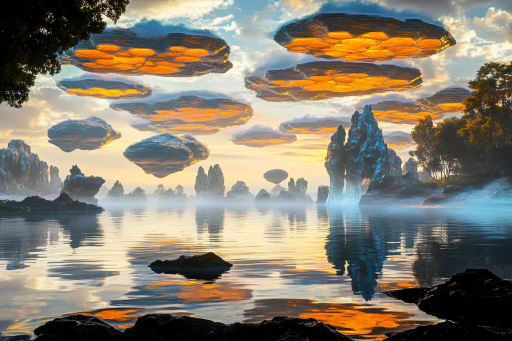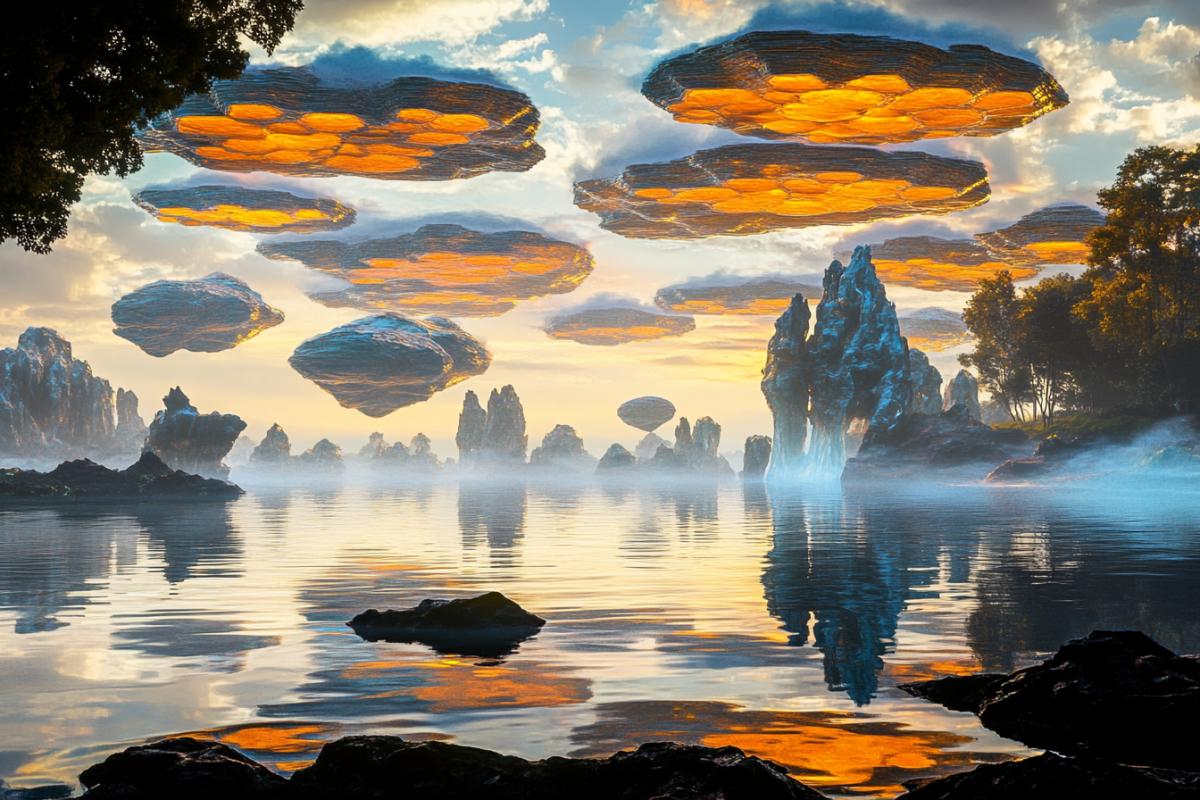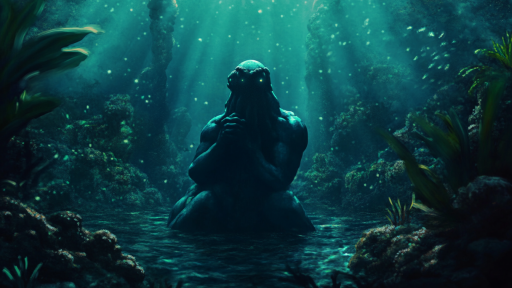
The solar system is more than just planets and moons—it’s filled with strange and unexpected wonders hidden in the vastness of space. From bizarre landscapes that defy explanation to celestial objects with unusual properties, these overlooked discoveries reveal just how mysterious our cosmic neighborhood truly is. Some are remnants of ancient cosmic events, while others challenge our understanding of planetary science. The more we explore, the more we realize that the solar system is full of surprises waiting to be uncovered.
The Glass Rainstorms of Exoplanet HD 189733b

On the distant exoplanet HD 189733b, violent storms rage through its thick atmosphere, but the rain isn’t water—it’s molten glass. The extreme heat from its nearby star causes silicate particles to form into glass droplets, which then fall sideways due to powerful winds. This creates a terrifying, high-speed sandblasting effect across the planet. If Earth had weather this extreme, it would be completely uninhabitable.
The Hexagonal Storm on Saturn

At Saturn’s north pole, a gigantic, perfectly shaped hexagonal storm swirls across the gas giant’s atmosphere. This six-sided hurricane, wider than Earth itself, has baffled scientists since its discovery. Unlike any other storm in the solar system, it has remained stable for decades, maintaining its bizarre geometric shape. The reason for its precise structure remains one of Saturn’s greatest mysteries.
The Blue Flames of Io’s Volcanic Eruptions

Jupiter’s moon Io is the most volcanically active world in the solar system, with eruptions powerful enough to be seen from space. But what makes Io truly strange is that its volcanic plumes burn blue, not red. This eerie glow is caused by sulfur-rich lava, which produces a chemical reaction that emits a ghostly blue flame. Io’s hellish landscape is a volcanic wonder unlike anything found on Earth.
The Ice Spikes of Europa

moons, lies an ocean that may harbor alien life. But what’s above that ice is just as strange—massive, jagged ice spikes called penitentes, towering up to 50 feet high. These formations are believed to be caused by sublimation, where ice turns directly into vapor without melting. The extreme terrain could make future landings on Europa far more challenging than expected.
The Deepest Canyon in the Solar System – Valles Marineris

Mars is home to Valles Marineris, a canyon system so enormous that it dwarfs the Grand Canyon. Stretching over 2,500 miles long and plunging miles deep, this Martian scar could fit the entire United States inside it. Scientists believe it was formed by ancient tectonic forces, water erosion, or a combination of both. If explored in person, it would be one of the most breathtaking landscapes in the solar system.
The Mysterious Rings of Rhea

Saturn is famous for its rings, but one of its moons, Rhea, may also have a hidden ring system of its own. This would make it the only known moon in the solar system with rings, a phenomenon once thought to be exclusive to planets. Scientists suspect that tiny particles orbiting Rhea create this strange effect, but no one has directly observed them. If confirmed, it would completely change what we know about moon formation.
The Geysers of Enceladus

Saturn’s icy moon Enceladus erupts with powerful geysers that shoot water vapor and ice into space. These plumes originate from an underground ocean and contain organic molecules, hinting at the possibility of life. The geysers create a thin, icy ring around Saturn, making Enceladus an active participant in shaping its environment. Future missions could reveal whether something is swimming beneath its frozen crust.
The Floating Mountains of Titan

Saturn’s largest moon, Titan, is a world of liquid methane lakes and a thick, hazy atmosphere. But what’s even stranger is that it may have floating mountains—solid ice formations that rise and sink in its methane seas. Because ice is less dense than Titan’s liquid hydrocarbons, these massive structures could move over time, altering the landscape. This alien geology makes Titan one of the most Earth-like yet completely alien worlds we’ve discovered.
The Loneliest Object in the Solar System – 90377 Sedna

Beyond Pluto, an icy world named Sedna follows an extremely distant and mysterious orbit. It takes over 11,000 years to circle the Sun, spending most of its time in the farthest reaches of the solar system. No one knows how it ended up in such a remote trajectory, leading some scientists to speculate about an unknown Planet Nine influencing its orbit. Sedna’s isolation makes it one of the most enigmatic objects in our cosmic backyard.
The Double Sunset of Kepler-16b

Much like the twin suns of Tatooine in Star Wars, the exoplanet Kepler-16b orbits two stars, creating breathtaking double sunsets. This means that on this world, two suns rise and set in the sky, casting surreal shadows and ever-changing light patterns. The discovery of Kepler-16b proved that binary star systems can host planets, expanding our understanding of habitable zones in the universe. If life exists there, it would experience an entirely different concept of day and night.
The Shadowy Plains of Mercury – The Weirdest Ice in the Solar System

Mercury, the closest planet to the Sun, seems like the last place you’d expect to find ice. But in the shadows of its deep craters—where sunlight never reaches—frozen water exists in pure, untouched deposits. These dark regions act as cosmic freezers, preserving ancient ice despite Mercury’s scorching temperatures elsewhere. The presence of ice on such a hot planet is a paradox that continues to challenge planetary scientists.
Secrets Waiting in the Darkness

The solar system is full of hidden wonders, many of which remain unexplored and unexplained. From moons that spew geysers into space to planets with twin sunsets, each discovery challenges what we think we know. As technology advances, these strange worlds may soon reveal even more of their secrets. The next great cosmic mystery could be waiting just beyond the reach of our current exploration.





